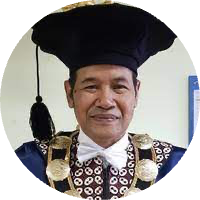Kambuik Kuantan Singingi culture for realistic mathematics education approach
DOI:
https://doi.org/10.21831/ej.v3i1.44988Keywords:
Instrument, Kambuik Kuantan Singingi, mathematics learning, realistic mathematics educationAbstract
References
Ajmain, A., Herna, H., & Masrura, S. I. (2020). Implementasi pendekatan etnomatematika dalam pembelajaran matematika. SIGMA: Jurnal Pendidikan Matematika, 12(1), 45–54. https://doi.org/10.26618/sigma.v12i1.3910
Akbar, S., & Holid, A. (2013). Instrumen perangkat pembelajaran (2nd ed.). Remaja Rosdakarya.
Akker, J. van den, Bannan, B., Kelly, A. E., Nieveen, N., & Plomp, T. (2013). Educational design research - part A: An introduction. Netherlands Institute for Curriculum Development (SLO).
Ananda, R. (2018). Penerapan pendekatan Realistics Mathematics Education (RME) untuk meningkatkan hasil belajar matematika siswa sekolah dasar. Jurnal Cendekia : Jurnal Pendidikan Matematika, 2(1), 125–133. https://doi.org/10.31004/cendekia.v2i1.39
Anderha, R. R., & Maskar, S. (2020). Analisis kemampuan komunikasi matematis siswa pada pembelajaran daring materi eksponensial. Jurnal Ilmiah Matematika Realistik, 1(2), 1–7. https://doi.org/10.33365/ji-mr.v1i2.438
Astuningtyas, E. L., Wulandari, A. A., & Farahsanti, I. (2017). Etnomatematika dan pemecahan masalah kombinatorik. Jurnal Math Educator Nusantara: Wahana Publikasi Karya Ilmiah Di Bidang Pendidikan Matematika, 3(2), 111–118. https://doi.org/10.29407/jmen.v3i2.907
Baihaqi, M. R., Rustono, W. S., & Lidinillah, D. A. M. (2018). Pengembangan media kartu nusantara untuk pembelajaran IPS kelas IV SD pada materi keanekaragaman suku bangsa dan budaya. Pedadidaktika: Jurnal Ilmiah Mahasiswa Pendidikan Guru Sekolah Dasar, 5(2), 47–58. https://ejournal.upi.edu/index.php/pedadidaktika/article/view/7353
Bararah, I. (2017). Efektifitas perencanaan pembelajaran dalam pembelajaran pendidikan agama Islam di sekolah. Jurnal Mudarrisuna: Media Kajian Pendidikan Agama Islam, 7(1), 131–147. https://doi.org/10.22373/jm.v7i1.1913
Fajriyah, E. (2018). Peran etnomatematika terkait konsep matematika dalam mendukung literasi. Prisma : Prosiding Seminar Nasional Matematika, 1, 114–119. https://journal.unnes.ac.id/sju/index.php/prisma/article/view/19589
Fauzi, A., & Setiawan, H. (2020). Etnomatematika: Konsep geometri pada kerajinan tradisional sasak dalam pembelajaran matematika di sekolah dasar. Didaktis: Jurnal Pendidikan Dan Ilmu Pengetahuan, 20(2), 131–147. https://doi.org/10.30651/didaktis.v20i2.4690
Fauziana, A., Budiarto, M. T., & Wiryanto, W. (2020). Metakognitif dalam pembelajaran berbasis realistic mathematics education. Phenomenon : Jurnal Pendidikan MIPA, 10(2), 160–176. https://doi.org/10.21580/phen.2020.10.2.5740
Indriyani, D., Suharto, S., & Trapsilasiwi, D. (2012). Pengembangan perangkat pembelajaran matematika berorientasi pada pendekatan Realistics Mathematics Education (RME) sub pokok bahasan bilangan pecahan siswa kelas VII SMP. Kadikma, 3(3), 179–187. https://doi.org/10.19184/kdma.v3i3.1023
Marsigit, M., Setiana, D. S., & Hardiarti, S. (2018). Pengembangan pembelajaran matematika berbasis etnomatematika. Prosiding Seminar Nasional Etnomatnesia, 20–38. https://jurnal.ustjogja.ac.id/index.php/etnomatnesia/article/view/2291
Rahmawati, Z. Y., & Muchlian, M. (2019). Eksplorasi etnomatematika rumah gadang Minangkabau Sumatera Barat. Jurnal Analisa, 5(2), 123–136. https://doi.org/10.15575/ja.v5i2.5942
Retnowati, I. D., Siswono, T. Y. E., & Wiryanto, W. (2021). Pengembangan perangkat pembelajaran matematika realistik terintegrasi ICT untuk meningkatkan kemampuan berpikir kritis siswa. Anargya : Jurnal Ilmiah Pendidikan Matematika, 4(2), 129–135. https://doi.org/10.24176/anargya.v4i2.6300
Rewatus, A., Leton, S. I., Fernandez, A. J., & Suciati, M. (2020). Pengembangan lembar kerja peserta didik berbasis etnomatematika pada materi segitiga dan segiempat. Jurnal Cendekia : Jurnal Pendidikan Matematika, 4(2), 645–656. https://doi.org/10.31004/cendekia.v4i2.276
Rochmad, R. (2012). Desain model pengembangan perangkat pembelajaran matematika. Kreano, Jurnal Matematika Kreatif-Inovatif, 3(1), 59–72. https://doi.org/10.15294/kreano.v3i1.2613
Sarwoedi, S., Marinka, D. O., Febriani, P., & Wirne, I. N. (2018). Efektifitas etnomatematika dalam meningkatkan kemampuan pemahaman matematika siswa. Jurnal Pendidikan Matematika Raflesia, 3(2), 171–176. https://doi.org/10.33369/jpmr.v3i2.7521
Sugiyono, S. (2019). Metode penelitian kuantitatif, kualitatif, dan R&D. Alfabeta.
Suripah, S., & Retnawati, H. (2019). Student mathematical connection ability in representing multiplication at the elementary school. Journal of Physics: Conference Series, 1254(1), 012080. https://doi.org/10.1088/1742-6596/1254/1/012080
Widada, W., Herawaty, D., Anggoro, A. F. D., Yudha, A., & Hayati, M. K. (2019). Ethnomathematics and outdoor learning to improve problem solving ability. Proceedings of the International Conference on Educational Sciences and Teacher Profession (ICETeP 2018), 13–16. https://doi.org/10.2991/icetep-18.2019.4
Downloads
Published
How to Cite
Issue
Section
Citation Check
License
The authors submitting a manuscript to this journal agree that, if accepted for publication, copyright publishing of the submission shall be assigned to Ethnomathematics Journal. However, even though the journal asks for a copyright transfer, the authors retain (or are granted back) significant scholarly rights.

Ethnomathematics Journal by https://journal.uny.ac.id/index.php/ethnomath is licensed under a Creative Commons Attribution-ShareAlike 4.0 International License.












